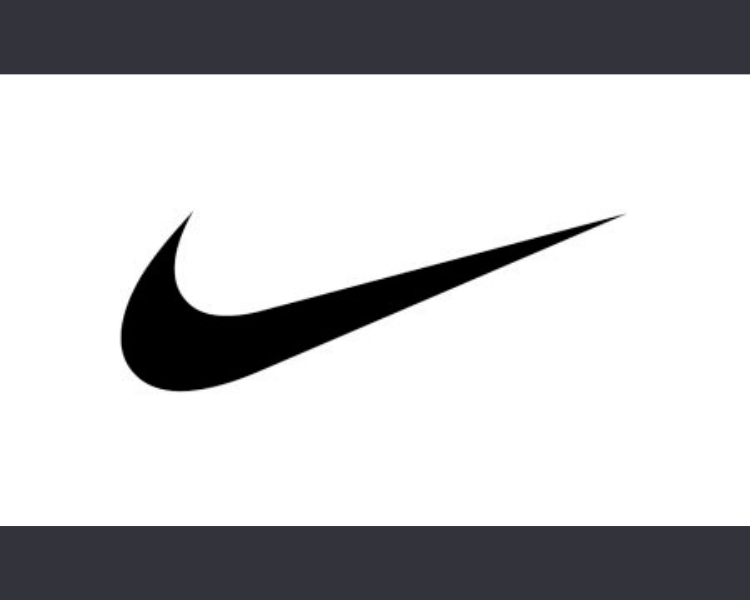The logos of renowned brands are more than mere symbols; they are the result of strategic planning, innovation, and insightful stories. This article explores the key factors that contribute to the success of logos, delving into the stories behind some of the world’s most famous brands.
Critical Factors for a Successful Logo
Successful logos share common characteristics, including recognizability, alignment with brand messaging, uniqueness, trust-building qualities, readability at any size, and a timeless and professional design. Despite the challenge of incorporating these principles into a single logo, many well-known brands have achieved it, leading to significant business success.
The Evolution of Logos in Changing Markets
As markets and demographics evolve, the core characteristics of effective logos remain constant. Typography, brand colors, patterns, and layout play crucial roles in shaping how users perceive a business. Understanding the stories behind popular logos can guide businesses in refining their branding methods and connecting with their target audience.
Key Takeaways
- Understanding the history of famous logos aids in shaping brand identity.
- Effective logo design requires simplicity, relevance, memorability, timelessness, and versatility.
- Explore 31 famous logos for inspiration, including Apple, Disney, and Target.
- Learn about the ups and downs in the business journeys of famous logos.
5 Famous Logos and Their Stories
Explore the stories behind 5 world-renowned companies and their logos, gaining insight into the inspiration and evolution of these iconic symbols. Lets take a look through some of the worlds most famous logos.
Apple

It’s intriguing to contemplate that one of the world’s major brands is visually represented by a simple piece of fruit.
To this day, numerous theories circulate on the internet regarding the origin of the company’s popular logo featuring a bitten apple. Throughout the years, the logo has undergone various changes, but the distinctive image of the half-eaten apple has consistently remained.
The prevailing theory suggests that the logo pays homage to the late father of computer science, Alan Turing, who is believed to have ended his life by consuming a cyanide-laced apple. Many saw this as a poignant tribute by Apple to honor a man pivotal in advancing their mission of cutting-edge technology.
However, this beautiful narrative is a misconception.
Steve Jobs chose the name Apple because he found it to be a powerful and impactful word. Interestingly, he was on an all-fruit diet when the idea struck him. The logo itself was crafted by Rob Janoff, who emphatically asserts that it holds no connection to Alan Turing, debunking the prevalent theory.
Janoff explains that the bite taken out of the apple serves a practical purpose – to prevent confusion with a cherry. The message here is clear: simplicity in the backstory can elevate a logo to great heights. So, in designing your logo, remember not to overthink it; even the most straightforward narratives can achieve remarkable success.
Nike

Despite Nike boasting one of the most iconic logos, one might assume that the brand invested substantial funds in its creation. However, Nike’s narrative challenges the notion that high expenses are a prerequisite for crafting popular logos. The key to an effective logo, as exemplified by Nike, lies in simplicity and a visionary concept.
Phil Knight, Nike’s founder, aspired to have a logo that conveyed movement and determination. Seeking assistance, he approached one of his students, Carolyn Davidson, for logo design. Davidson produced several design samples, and eventually, Knight selected the one symbolizing the wings of the Greek goddess Nike.
The wings of the goddess gave rise to Nike’s renowned swoosh symbol, embodying victory, a fitting quality aligning with the company’s ethos. In 1971, Knight compensated Davidson with a mere $35 for the logo, unaware of its future societal and business impact.
By 1983, Nike had ascended to success as a prominent sportswear brand, with its logo earning widespread respect. In recognition of Davidson’s contribution, the company hosted an executive dinner in her honor. She was presented with a diamond ring shaped like the swoosh and company shares as an expression of gratitude.
The value of the shares awarded to Davidson has since surged to an estimated worth exceeding a million dollars today. This anecdote serves as inspiration for budding designers, emphasizing that seemingly modest projects can potentially lead to extraordinary outcomes, with clients who may, in time, become the next Nike.
Real Madrid

Real Madrid stands as the most globally followed football club, renowned for its extensive trophy collection that positions it among the most triumphant sporting teams. The club’s rich history and unwavering spirit have not only garnered a massive fanbase but have also attracted the world’s premier football talents.
A distinctive feature of the Real Madrid logo is the crown, a symbolic addition made in 1920 when Alphonso XIII, the King of Spain, bestowed royal status upon the club.
The term “Real” translates to “royal” in Spanish, reflecting not only in the team’s style of play but also in their collective demeanor on and off the field.
During the 1930s, a prohibition on monarchy-related symbols led to the removal of the crown from the club’s logo. However, by 1941, the crown was reinstated, seamlessly aligning with the team’s regal history.
Beyond the crown, the logo incorporates the brand’s signature colors of gold and blue. Gold symbolizes the club’s elevated status, while blue, a warm hue, serves as an expression of the team’s unwavering loyalty to its fanbase. Together, these elements encapsulate the essence of Real Madrid’s majestic legacy and commitment to excellence.
The Rolling Stones

The Rolling Stones stand as an enduring and iconic brand, captivating audiences since their inception in 1962 with timeless hits like “Gimme Shelter” and “(I Can’t Get No) Satisfaction.” Blending rock and blues genres, the band has evolved while maintaining its legendary status.
At the heart of The Rolling Stones’ visual identity lies one of the world’s most renowned logos—the iconic tongue and lips logo, affectionately known as Hot Lips. This emblem pays homage to the powerful Hindu Goddess Kali, symbolizing feminine strength and intensity.
The intense imagery associated with Goddess Kali was chosen to convey a dynamic energy that the band sought to encapsulate in their logo design. The tongue sticking out serves as an act of rebellion and anti-establishment, capturing the essence of the band’s personality and lyrics.
Designed by John Pasche, the logo was created for a mere £50, yet its iconic status not only propelled Pasche’s career but also earned him widespread fame. The Rolling Stones’ logo remains a testament to the enduring power of design to encapsulate the spirit and identity of a legendary musical force.
PlayStation

PlayStation, under the ownership of Sony, stands as the world’s largest video gaming company, with its consoles gracing millions of households globally. As the gaming experience expands to the silver screen with the release of the Uncharted film, the iconic PlayStation logo takes on a broader cultural presence.
The mastermind behind the PlayStation logo, Manabu Sakamoto, explored various designs before finalizing the emblem for the original PlayStation 1. Opting for simplicity, he incorporated red, green, blue, and yellow, ensuring the design’s accessibility and easy communication to diverse audiences.
The initial logo boasted an optical illusion, creating a sense of depth between the P and the S, suggesting the console’s capability to deliver 3D gaming experiences—an impressive feature for its 1994 debut.
Although the color palette has evolved to black and white, the fundamental structure of the PlayStation logo has endured. Over the years, the logo has undergone simplification, cementing its status as one of the most recognizable symbols not only in the gaming world but also transcending into broader cultural recognition.
10 Fun Facts About afew of the World’s Most Famous Logos
- When the Nike branding team ultimately settled on the swoosh, Knight remarked that he “didn’t love it, but it will grow on me.”
- The first McDonald’s restaurant, established by Richard and Maurice McDonald in 1937, saw the introduction of the iconic arches to the brand in 1952.
- Gucci’s son, Aldo, crafted the renowned lettermark logo to represent his father’s initials, with the added touch of symbolizing the links of a bracelet for an extra touch of extravagance.
- The script logo of Coca-Cola, a symbol of enduring fame, was designed by the founder’s bookkeeper, Frank Mason Robinson. Robinson believed that the two “C”s would look exceptionally captivating in advertising.
- Instagram’s original logo was personally designed by its CEO, Kevin Systrom.
- Dove’s brand colors, including white, blue, and intensified gold, aim to evoke emotions of tenderness, clarity, and luxury—a vision aligned with the company’s pioneering use of “real women” in their advertisements.
- The yellow color in National Geographic’s logo symbolizes the sun, representing the universal reach of the channel around the globe.
- Audi faced a legal challenge in 1995 when the International Olympic Committee sued them for the logo’s similarity to the Olympic rings. However, Audi emerged victorious in the case.
- The familiar Apple symbol we recognize today was the sole option presented by Janoff. As Apple was a startup at the time, there was neither a design brief nor the resources for an alternative.
- Lego’s name is derived from an abbreviation of the Danish words, “leg godt,” translating to “play well.” Even in childhood, logo associations begin to take root in our young minds.
Characteristics of Famous Logos
A logo serves as an integral component of any business’s branding, often representing one of the initial visual elements encountered by potential customers.
The design of a logo involves various considerations, influenced by the unique characteristics of a brand and the industry it operates in. Despite these differences, several popular logos and brands share five key characteristics that contribute to their success.
So, what are the defining characteristics of renowned logos?
- Simplicity: Successful logos aim to communicate a single key message, avoiding unnecessary complexity.
- Relevance: They align with the industry and embody the mission and vision of the brand.
- Memorability: Effective logos are simple yet impactful, making them easy for consumers to remember.
- Timelessness: They withstand the test of time and changing trends, maintaining enduring meaning. Examples include logos from Coco Chanel, Versace, and Dolce and Gabbana.
- Versatility: Adaptable to various contexts, these logos can seamlessly transition from tiny banners to large billboards or black and white backgrounds.
These five qualities collectively contribute to a logo’s instant recognizability, fostering a connection between consumers and the brand.
Summary
In conclusion, attaining recognition as one of the most iconic symbols globally is a formidable accomplishment, and these businesses serve as compelling examples that it is indeed achievable.
The widespread fame of these logos is not arbitrary; rather, it is a result of their resilience over time and their ability to carve a lasting place in the public consciousness. The logos of these companies have become powerful tools for driving growth and popularity. What, then, is the key to the success of these renowned logos and brands?
A significant number of successful logos adopt a minimalistic approach, complemented by a compelling narrative.
